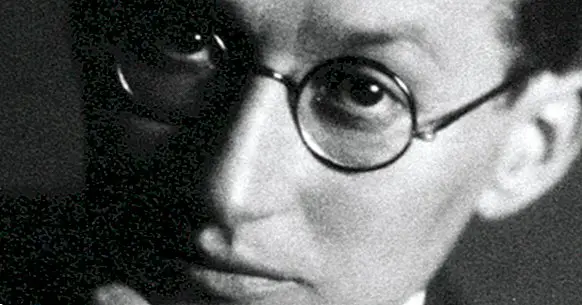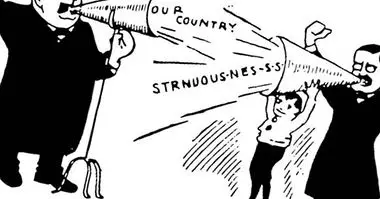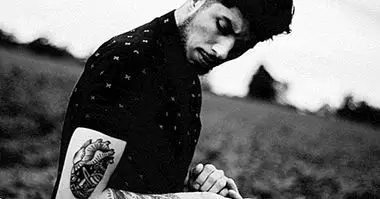Kurt Lewin and the Theory of the Field: the birth of social psychology
In the history of psychology there are few figures as important and influential as Kurt Lewin . This researcher was not only one of the promoters of Gestalt psychology, but is also considered the father of social psychology and the psychology of organizations.
Kurt Lewin was also the creator of the Field Theory , which has served as a basis for developing research on group dynamics, very applicable in the organizational and business environment. Then, to understand his legacy, we will go back to the years in which Kurt Lewin developed his ideas.
The firsts years
Kurt Lewin was born in 1890 into a Jewish family living in Mogilno, a town that belonged at that time to the kingdom of Prussia and is now part of Poland.
After he and his family moved to Berlin, Kurt Lewin started studying medicine at the University of Freiburg but soon after moved to Munich to embark on a career in biology. Back in Berlin, and without having finished his training, he became more interested in psychology and philosophy, a discipline he began studying in 1911. By that time he had already begun to participate in initiatives linked to socialism, Marxism and the struggle for the rights of women, and believed that applied psychology could be helpful in promoting reforms in favor of equality.
Forging the psychology of Gestalt
With the outbreak of World War I, Kurt Lewin was sent to the front to serve as an artilleryman. However, he was immediately wounded, so he remained convalescent for several days. At that time began to make a description of the battlefield using topological terms that resembled the one that would be made from the theory of Gestalt, which at that time was brewing, and also reminded the topological theory that he would create something later.
Once he had returned to Berlin, In addition to PhD in philosophy, Kurt Lewin started working at the Psychological Institute of Berlin . It is there where he came into contact with two other great representatives of Gestalt psychology: Wolfgang Köhler Y Max Wertheimer . The crossing of ideas between them allowed them to consolidate the ideas belonging to the Gestalt current and, at the same time, served as a breeding ground for the laboratory to be a place where young promises of European psychology were going to be formed. , like Bluma Zeigarnik.
Kurt Lewin in the United States
In 1933, when Hitler and the Nazis came to power, Kurt Lewin decided to move immediately to another country. He ends up emigrating to the United States after unsuccessfully trying to obtain a position as a university professor in Jerusalem, and thanks to the contacts of Wolfgang Köhler he manages to enter Cornell University to later work in Iowa. In 1944 he moved to Director of the Group Dynamics Research Center at MIT Massachusetts.
During this time, Kurt Lewin works especially in social phenomena that have to do with social interaction, and investigates from the effects of social pressure on children's eating habits to the work dynamics that are most effective in organizations. Therefore, the areas touched by Kurt Lewin went far beyond what used to be associated with the repertoire of activities of a psychologist, either from the Gestalt stream or from any other school.
When Kurt Lewin died in 1947, had already left open a door that would give way to the new branch of psychology: social psychology .
Field Theory of forces
In the years when Kurt Lewin lived in North America, behaviorism was the prevailing paradigm in the United States. The behaviorists understood that human behavior is the result of the way in which the environment influences individuals, but Lewin started from a psychology vision very different from this one. He, like the representatives of Gestalt in Europe, understood that people are not a simple passive agent that reacts to stimuli, but that they act according to the way in which they perceive that they interact with the environment . The interaction was, then, the fundamental element that Kurt Lewin started with in his analyzes.
The Field Theory is his way of capturing the idea that psychology should not focus on the study of the person and the environment as if these were two pieces to be analyzed separately, but we must see the way in which they affect each other. yes in real time.That is why Kurt Lewin worked with categories such as "living space" or "field": the interesting thing for him were the dynamics, the changes, and not the static images of what happens in each moment, which he understood were only useful for describe what happens in each phase of a process, and not to explain.
To describe the processes of change, Kurt Lewin was inspired by the studies of physics and borrowed the idea of force field . For him, group or individual behavior can be understood as a process of change that leads from an initial situation to a different one. Thus, Lewin's Field Theory establishes that what happens while this process of change takes place passes within a dynamic field in which the state of each part of this force field affects all the others.
The most important variables that are acting in the fields or "vital spaces" are, for Kurt Lewin, the tension, the strength and the need, thanks to which the behavior has a purpose.
Kurt Lewin and action research
Kurt Lewin understood that, as in a field of forces all parties affect each other, To understand human behavior, we must take into account all the variables that are intervening in real time in the actions of people and groups , from the space in which they are to the temperature, the way in which they socialize between them, etc. In addition, these elements can not be analyzed in isolation, but we must focus on studying their interactions to have a holistic view of what happens.
But this leads to an idea that at that time was revolutionary: as what is studied is not something isolated but interaction, we must not be afraid to affect the object of study as researchers. Moreover, intervening in the force field allows us to introduce dynamics that will help us understand the mechanisms that work in this field.
In short, according to Kurt Lewin influence on these dynamics helps to have a true picture of what happens. This was crystallized in one of the most famous phrases of this psychologist: to understand a system, you have to change it. This is the principle of action research that Kurt Lewin proposed as an effective method to understand and improve social dynamics.



















